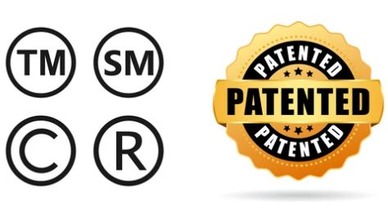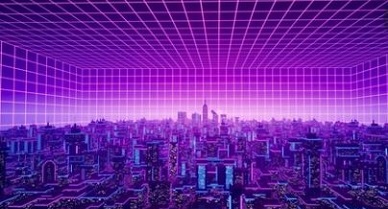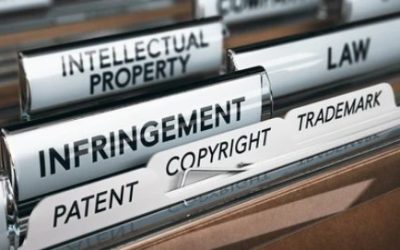Patenting Artificial Intelligence: What Lies Ahead
Artificial Intelligence (AI) has come out to be one of the most revolutionary as well as important technologies of this era. The 21st century has witnessed rapid leaps and bounds, its use as well as application. The sounds of Hey Siri, Hey Alexa, and OK Google are well known today. Artificial intelligence could be traced back to 1956 when during a workshop held by Dartmouth College, it was one of the observations that a machine can simulate almost every feature of learning and almost every aspect of intelligence if so precisely described. It is expected that by 2020, Artificial intelligence would be driving about $33 trillion of economic growth. Further, it is said that artificial intelligence is said to leave no aspect of our society untouched.
What is Artificial Intelligence (AI)?
According to India’s 18-member task force, Artificial Intelligence could be thought of as making such intelligence machines and computer programs so that their intelligence is the computational part of their ability to achieve goals
Whenever there is something intellectual created, the concept of intellectual property rights is inevitable to avoid, and in this case, the most obvious area that is thrown light upon is patents. Now how efficient would be the IP Regime in handling AI and how far its implications go, would be a key differentiator in defining the future as well as the path of Artificial Intelligence.
Recently, a paper discussion titled, ‘India’s National Strategy for Artificial Intelligence’ was released by the Indian Governments ‘think tank’ NITI Aayog wherein how AI could be used to foster economic as well as social progress was discussed under the brand name of ‘#AIForALL’
But AI being a new technology, there are various grey areas surrounding the patenting of AI which remain undiscussed.
The most common issues could be:
Whether Artificial Intelligence Could really be the subject matter of a Patent?
It has always been debated whether CRIs being awarded patents could have the chance of increased investment in software research thereby leading to innovation. Naysayers opine the view that it would stifle innovation. Where would that then leave AI? The middle ground appears to be the best approach but it becomes necessary for various patent offices to address the problem. A solid framework is necessitated through various open discussions as well as measures to standardize as a comprehensive approach to the grant of AI patents. TA conference on AI and patenting has already been held by the EPO and thereby for any country to be a leader in AI, adaptation to the patent regime to ensure new opportunities for innovators becomes inevitable. Governments are to deal systematically with the patenting of AI’s and the same should be for the benefit of the community.
Who would be the first inventor and owner where AI innovates? (Inventorship?)
Though it is unambiguous as to who would really be the inventor of an AI-based invention which involves human intervention but who could really be the inventor of an invention without any human intervention remains undefined with the transition from weak AI to strong AI. When a non-human element, i.e., technology leads to an innovation, which could be considered the inventor? Whether the human who created the AI in the first place or whether AI could be the patent holder. There is no clear answer to the same currently. In India, Sec 6 of the Patent Act lays down that the patent for an invention can only be provided to the true and first inventor of the invention or to an assignee. Sec 2(1)(a) further defines a patentee as a person who is the owner or the grantee of the patent as per the patent office register. From a holistic point of view, this could possibly be inferred as a natural person. But at the same time, Sec (2)(1)(s) defines a person to include the government, which is a non-natural entity. Further, keeping in mind Sec 2(2)(y), true and the first inventor is an exclusionary definition and there is no mention of a natural person. Thus, in India, there is no strict mention of human control to acquire a patent and leaves open several questions. Various questions linger around the subject, as to whether human intervention is a necessity to acquire a patent. This becomes debated with many countries like Saudi Arabia granting citizenship to social humanoid robots.
Who could possibly be held liable for the acts of AI? (Liability?)
The field of Artificial Intelligence is getting complex with strong and super-intelligent AIs coming into the picture each day. Assuming that an AI could be an inventor, there are various issues surrounding the liability in such cases. Sec.48 of the Patents Act talks about the consent of a Patentee. If AI could register a Patent as discussed above, what would come into the picture is whether it would have the power to give consent? In the case of the positive, how would a person obtain such consent? Acquisition and Ownership also face the same issue. In the case of ownership, how could an AI give the necessary consent for change of ownership?
As soon as a patent infringement is established, the infringer becomes liable to pay damages to the patent owner so as to compensate for the loss caused due to such infringement. This compensation generally includes payment in the form of lost profits, royalties, or even complete prohibition on infringing activities. Now an issue that would pose a major concern here, is that how an infringing AI be held liable by the courts? Whether its liability would fall on the owner or the operator? Apart from this, there are several issues which are not yet discussed which not only form the subject matter of debates in the IP context but also in areas such as tort, civil as well as criminal liability. 3 models of criminal liability have been discussed by the legal scholar Gabriel Hallevy which are instructive in understanding and form a solution to the issues discussed.
These are:
- ‘Perpetration-via-another’ Liability
Under this model, an Artificial Intelligence entity could not be said to be attributable to men’s rea. The perpetrator in this scenario could be said to be either the end-user or one who actually programmed the artificial intelligence software.
- ‘Natural Probable Consequence’ liability
This model necessarily follows an assumption that the programmer and/or the user are deeply involved as well as associated with the AI entity’s daily activities, but they are not indulged in so with the intention of the commission of an offense. Following the rule of ‘ignorantia juris non excusat’, i.e. Mistake of law cannot be an excuse, the model is based on assumption that the users or the programmers ought to have known the probability that the specific offense may have been committed, they are held liable.
- ‘Direct’ Liability Third
This model holds the Artificial Intelligence entity liable as if it was a human. The consequences of this model may be thought to be as we would make liable the act, but no particular person for it to be attributable to.
Conclusion
The present adjudication system is that which only touches the present AI technology. The need is felt for various governments to consider how various artificial intelligence systems could come within the purview of the IP regime and be a part of the patent ecosystem. It further becomes vital for various law-making as well as law enforcement entities to consider what would happen when artificial intelligence would collide with patent law. The current issue has been a vital topic of debate at various global forums such as the World Intellectual Property Organisation, World Economic Forum, and many more.
On a basic level, humans need to answer the question of whether a super strong and intelligent artificial intelligence system could really be a possibility? Whether basic level of general intelligence, reasonable and cognitive thinking could be inculcated into the machine which could further lead to its own acts of invention or liability? Whether such the machine could hold the responsibility of an inventor or the liability of its acts? As soon as these questions face solutions, the surrounding issues would eventually fall into place.
Another fascinating scenario to be considered is that if, superintelligent AI is a possibility, whether the system could decide upon whether the subject matter that it has created could be a patent? Whether it could find infringers? Whether the system could be so intelligent as to indulge in the filing, enforcement, prosecution, defense, payments, and receipts – replacing the humans? What lies ahead is uncertain and thought-provoking.
About the Author: Maahi Mayuri Student of New Law College, Bharati Vidyapeeth Deemed University, Pune, Intern at IP and Legal Filings, and can be reached at support@ipandlegalfilings.com.


